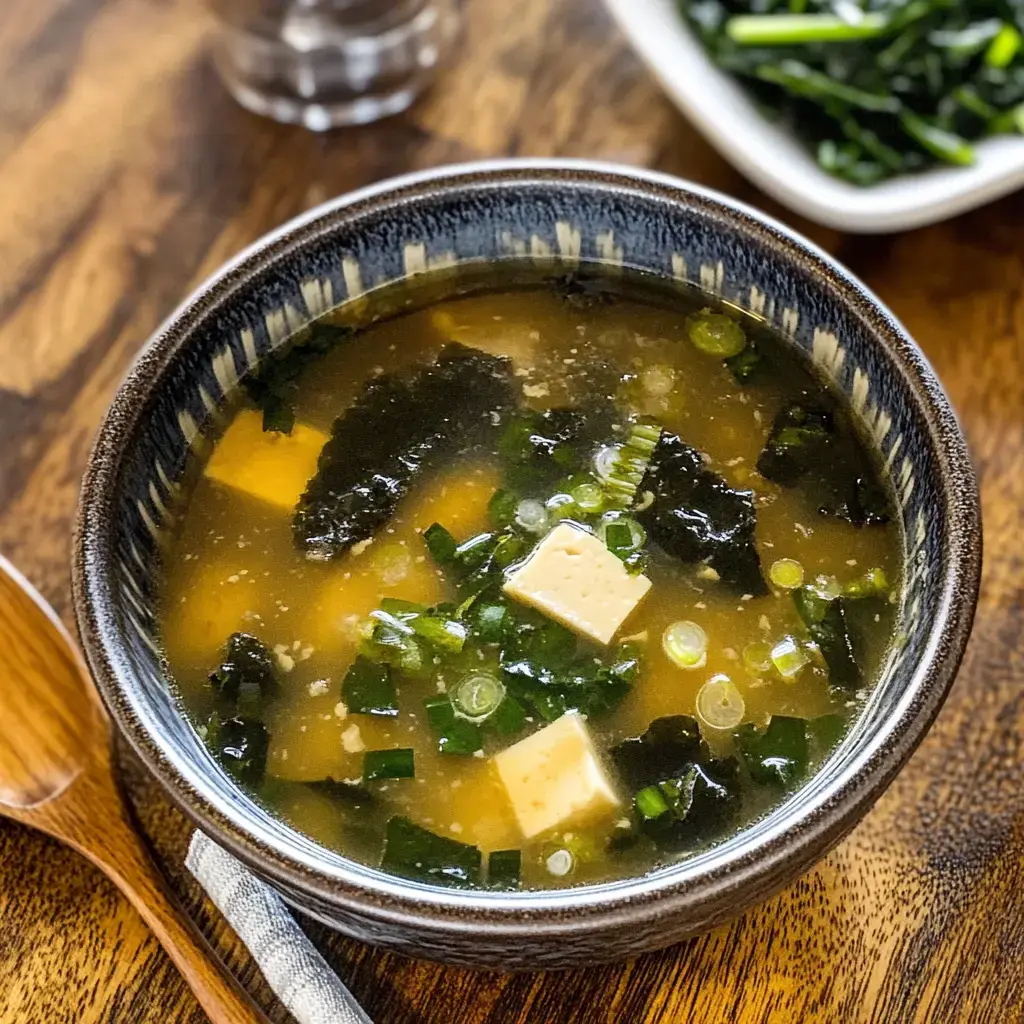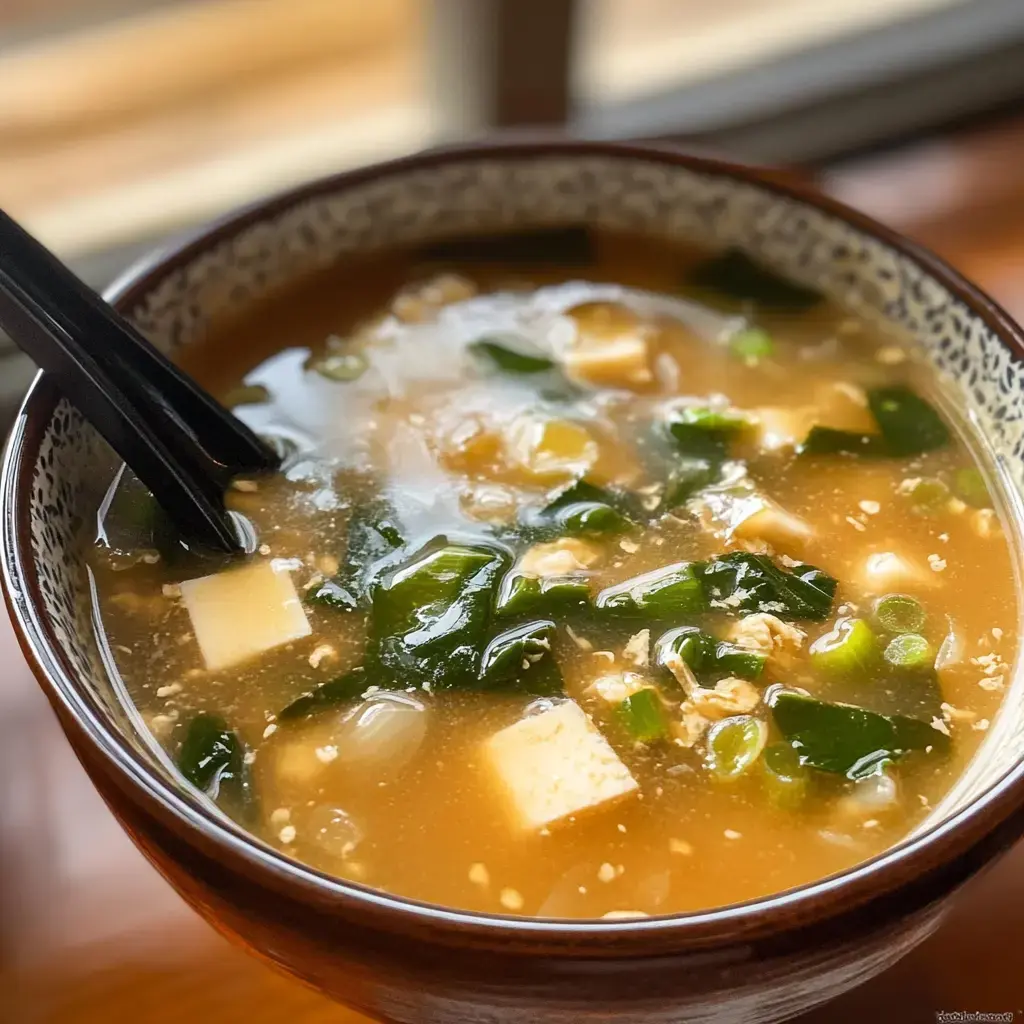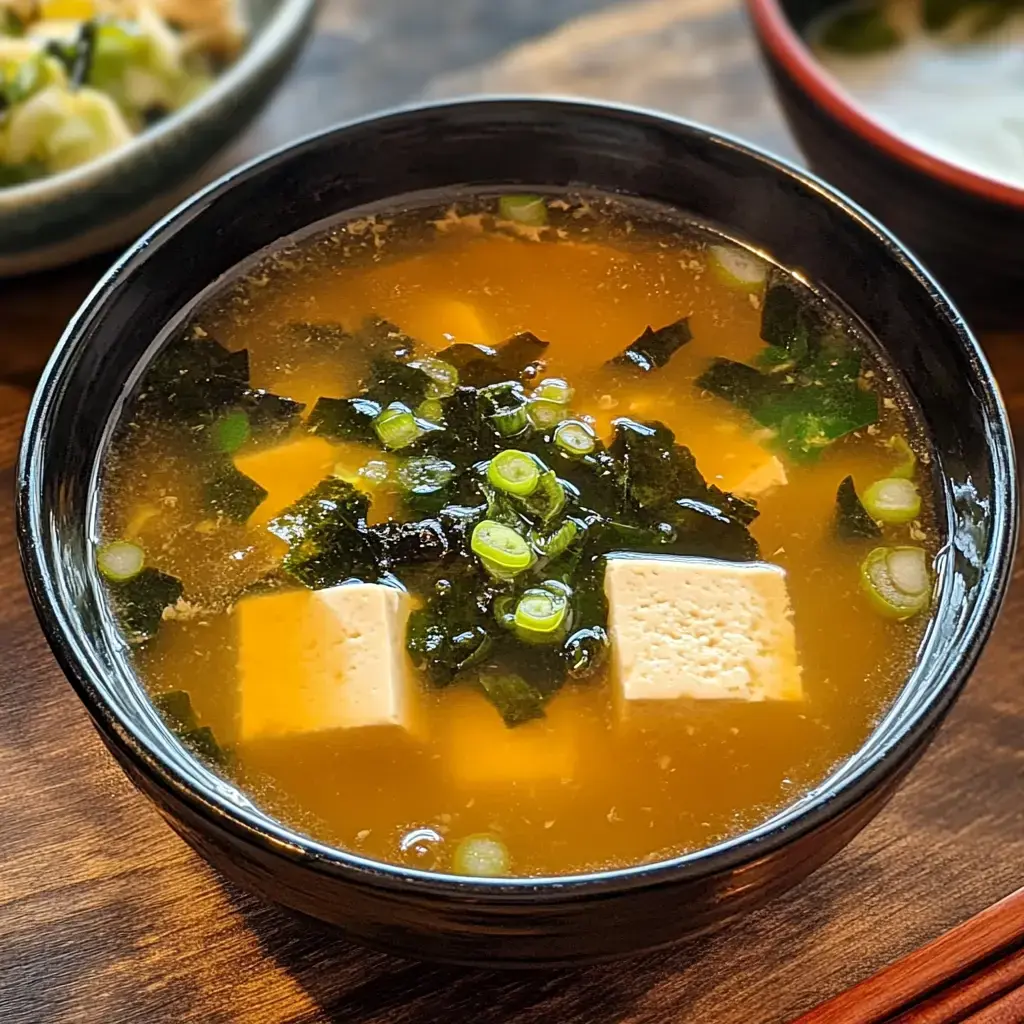 Pin it
Pin it
I wanna tell you about my go-to authentic miso soup that brings Japanese comfort food straight into your home! My Japanese neighbor taught me this, and now I make it pretty much every morning. When you mix in that miso paste and your kitchen gets filled with that amazing savory smell, it takes me straight back to when I traveled around Japan. The first time my family tried it, they were shocked that something this simple tasted so incredible!
What Makes This Soup Outstanding
This isn't your average soup! When you make your own dashi broth, you get this amazing flavor depth that store-bought versions just can't match. My friend was feeling sick last week, so I brought her some, and she told me it beat any restaurant version hands down. My kids, who normally only want chicken noodle, now ask for this all the time!
Ingredients You'll Need
- For The Dashi:
- Kombu seaweed
- Katsuobushi flakes
- Clean water
- For The Soup:
- Quality miso paste
- Silken tofu diced into cubes
- Wakame seaweed
- Green onions
- Mesh strainer
Cooking Instructions
- Creating The Dashi
- Start by putting kombu in cool water and let it sit until you see tiny bubbles forming. Then add the katsuobushi to finish it off perfectly!
- Creating The Soup
- Heat your dashi gently after straining it, drop in tofu cubes and watch as wakame expands like little sea flowers. Remember, don't ever boil it or you'll lose all those subtle flavors.
- Adding The Miso
- This part blends old traditions with good technique! First dissolve miso in a small ladle, then mix it into your soup. Every single serving needs to be just perfect!
 Pin it
Pin it
Tips For Excellence
Want to know my tricks for amazing miso soup? Always use filtered water for a cleaner tasting dashi. Don't cut corners on kombu soaking time. And here's my top tip, store your miso paste in a special fridge container to keep it fresh longer. I sometimes blend different miso types to create more interesting flavors!
How To Serve
I always use traditional Japanese bowls with those small spoons that make the broth so fun to sip. For breakfast, I'll throw in a soft-boiled egg on the side. When I have friends over, I put out extra stuff like mushrooms and different seaweeds so everyone can make their bowl just how they like it!
Storage Advice
Here's a handy trick, make extra dashi and store it in your fridge! This way you can whip up fresh miso soup whenever you want. Just remember to never boil when you heat it up and always add fresh miso paste. I prefer making small amounts so each bowl comes out perfect.
Try These Variations
Go ahead and try new things! I sometimes toss in sliced mushrooms or baby spinach. My friends who don't eat meat love it with just veggies and kombu dashi. One time I added corn and potato and it turned into total comfort food! That's the fun part of cooking, finding what works best for you.
 Pin it
Pin it
The Impact Of This Soup
This soup has become our family morning tradition! There's something really grounding about starting your day with such a nourishing bowl. My kids are learning about food from different cultures and how important it is to take time with what we eat.
The greatest thing isn't just how tasty it is but seeing everyone's amazement when they find out how easy yet fulfilling real miso soup can be! Whether you make it for breakfast comfort or just need something warm, it always delivers. And watching people discover traditional Japanese cooking magic? That's what makes sharing food ideas so worthwhile!
Frequently Asked Questions
- → What makes dashi so special?
Dashi, made from kombu (kelp) and katsuobushi (bonito flakes), is the base of miso soup and many Japanese dishes. It delivers deep, savory umami flavors essential to the dish.
- → Can this be made vegetarian?
Absolutely! Just replace the bonito flakes with only kombu or add dried shiitake mushrooms for similar umami richness.
- → Why avoid boiling miso soup?
Heating miso too much ruins its subtle flavors and destroys the probiotics. Add the paste after cooking and keep the heat gentle when serving.
- → How long does it stay fresh?
Miso soup is best enjoyed fresh. If storing, keep it without miso for up to 2 days in the fridge, and stir in the paste when reheating.
- → Which tofu texture is best?
Soft or silken tofu is the go-to choice. Its creamy texture makes it a lovely addition to the broth.
Conclusion
This warm Japanese favorite blends nutritious ingredients like wakame and silken tofu with homemade dashi. Create a flavorful soup that celebrates the simple yet bold flavors of Japan's cuisine, perfect for any time of the day.
